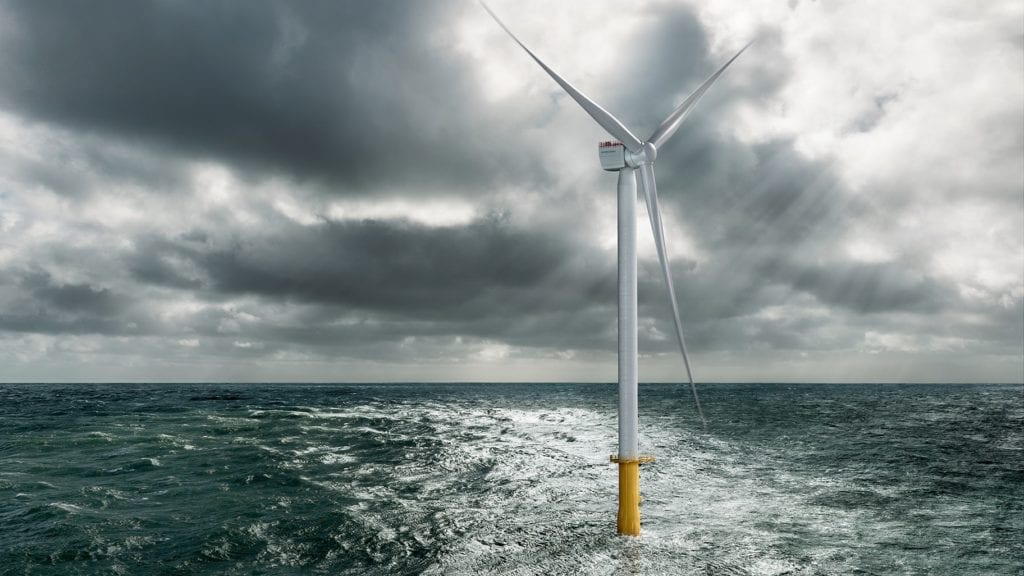COVID-19 Weighs on Siemens Gamesa Earnings
Siemens Gamesa Renewable Energy (SGRE) on May 6 said delays
to its renewable energy projects, in part due to supply chain disruptions from
the coronavirus pandemic, will continue to negatively impact the company’s
earnings this year.
The company reported its fiscal second-quarter earnings on Wednesday and said the COVID-19 outbreak “had a direct negative impact of €56 million [$60.63 million] on profitability, and intensified challenges experienced by the onshore business in India and Northern Europe.” SGRE reported that its margin on earnings before interest and tax (EBIT) fell to 1.5% in the first three months of this year, down from 7.5% in the year-ago period.
The wind turbine maker, which is scheduled to be merged into
a larger Siemens entity later this year, said earnings fell despite the company’s
build of a record-breaking order book for equipment and services. SGRE last
month withdrew its earnings guidance for 2020; Vestas, the world’s largest wind
turbine manufacturer along with SGRE, has done the same.

“We are experiencing a situation without precedent that has
changed our lives in just weeks. Siemens Gamesa considers that the renewables
industry must play a key role in the economic recovery to move towards a
sustainable energy model that generates quality jobs. It is in our hands to
avoid another crisis: the climate crisis,” said Markus Tacke, CEO of Siemens
Gamesa, in a statement.
The company said its revenue in the January-March period fell by 8%, to €2,204 million ($2.4 million), mostly due to fewer sales of wind turbines. The company said the pandemic has brought disruptions to its equipment supply chain, including the movement of components from China, and some manufacturing factories have been closed. It also said the normal pace of project construction will likely be slowed for the rest of this year.
Record Order Book
SGRE said it ended the first half of its fiscal year (October 2019—March 2020) with a record order book of €28.6bn ($30.9 billion), up 21% year-over-year, “which sustains good long-term prospects.” The company said that figure was bolstered by several deals, including its integration of service assets acquired from Senvion, a Germany-based wind turbine manufacturer.
SGRE in January completed the acquisition of about 9 GW of wind energy capacity from Senvion across 13 countries, at the time giving the company a serviced fleet of about 69 GW worldwide. The deal also included Senvion’s intellectual property, allowing SGRE “to offer competitive service solutions for other OEM [original equipment manufacturer] business and grow its multi-brand offering.”
The company said its second-quarter order intake was off 11% year-over-year, which it said reflected the “normal volatility” of the offshore wind power market, as well as “the impact of COVID-19” on the signing of onshore contracts. SGRE said some orders have been deferred to later quarters.
SGRE said orders for onshore wind energy equipment rose 13%
year-over-year—a total rise of about 9.5 GW—over the past 12 months, despite a
6% year-over-year reduction in the second quarter. Orders for offshore
installations in the past year increased 56%, to 2.879 GW. The company in the
second quarter also signed a preferred supplier agreement with Ørsted for the
Borkum Riffgrund 3 (900 MW) and Gode Wind 3 (242 MW) offshore wind farms, both
located in the German sector of the North Sea.
The company said the Senvion acquisition helped increase its
service sector orders by 75% year-over-year covering the past 12 months, with
total orders of €3,870 million ($4.2 million). Orders in the second quarter
rose 4% year-over-year.
‘Lack of Short-Term Predictability’
SGRE noted that the “the lack of short-term predictability
has led the company to withdraw the guidance it issued in the first quarter of
2020,” but said “the long-term prospects for the industry and Siemens Gamesa
remain sound.” It noted that “According to the International Energy Agency,
renewables will account for two-thirds of total capacity installed by 2040,
with a sustained level of installations averaging 57 GW per year.”
The company said it has “maintained a sound liquidity
position,” with total credit lines of €4.0 billion ($4.32 billion), against
which it has drawn €1.1 billion ($1.2 billion).
Siemens has said it plans to spin off its power and gas
units and merge them with SGRE, with an initial public offering of stock for
the new company—Siemens Energy—scheduled for September. Joe Kaeser, Siemens’
CEO, has said he plans to leave the company later this year when his contract
expires. He has made simplifying the company his signature goal, with the new
energy company likely his last action in that process.
Kaeser on a call with investors earlier this year said, “Siemens
Energy, in particular, can and will play a significant role in supporting the
global energy transition from conventional generation to renewable energy and
supplying technology to produce synthetic fuels for the high growth in [the]
economy.” Kaeser said SGRE will be the “cornerstone” of the new business.
Siemens has said the new Siemens Energy would have annual
revenue of about €30 billion ($32.6 billion), with an order backlog of €70
billion ($76 billion).
—Darrell Proctor is associate editor for POWER (@DarrellProctor1, @POWERmagazine).